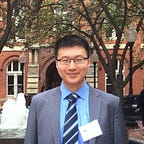A Dynamic Theory of Romantic Choice
In the tradition of “The Theory of Interstellar Trade”
I propose an answer to the question “why are all the good guys taken” through a dynamic model of romantic search. Search and matching models are workhorses in labor economics. I apply this framework to romance and explain why there are lots of single “boring Bernards and psycho Suzies”, as well as discuss the model’s welfare implications.
The key mechanism in the model is that good couples stay together for longer. As such, even if there is a large share of good romantic partners, most single people are crazy.
The existing literature focuses on problems caused by impossibly high standards. Redd (2014), for example, implores women to “get off your high heels (that you can’t afford) and stop judging men for not being perfect because neither are you”. Given that this is from the authoritative journal “Thought Catalog”, I interpret it as being representative of general opinion. To the extent that people address the question of search, it has mostly focused on how “friends” are neglected (DeVore 2009).
Previous mathematical treatments have focused on statics. The Wall Street Journal, for example, ran a Valentines day special on how probabilities for romance can be multiplied to compute the number of likely romantic partners. But this static analysis leaves open the determination of those probabilities. By modeling the structure of dating markets with an eye towards “search and matching”, we can determine the probability that agents find good matches in equilibrium.
Thus my model differs from past treatments by focusing on market structure and dynamics. In my cursory google searches I have not found this argument made in other articles, and to the best of my knowledge this is the first attempt to provide simulation results.
The Model
Suppose that there are two groups of people on the market: “crazy” undateables and “good” people who are hot stuff. The reader, if willing to read such a piece, is of course in the second category.
In each month, all the people mingle and can transition into/from one of five states: crazy-single, good-single, crazy-crazy-couple, crazy-good-couple, and good-good-couple. Single people transition into a couple state if they meet a person and hit it off, and couples spontaneous transition into the single state if they break up.
The key mechanism behind the model is that good couples stay together for longer periods of time. In my baseline calibration, I calibrate the model so that the expected relationship length of a crazy-crazy couple is 2 months, while the respective times for crazy-good and good-good couples are 6 and 24 months respectively.
The transition probabilities change with the number of people in each state. I defer mathematical details to an unwritten appendix, and instead show that under the baseline parameterization there is indeed convergence within 50 months.
We are now ready to answer basic questions about the equilibrium properties of dating markets.
Most Single People are Crazy
Even if only 50% of the population is crazy, in equilibrium around 63% of single people are crazy. This is a natural consequence of stable couples taking good people off the market. So the next time you’re at a bad date, feel free to let them off with “It’s not you, it’s the market structure”.
The flip side is that good people have a better than average chance of finding love: around 58% in this parameterization.
Bliss Makes the Single Life Harder
From my baseline calibration, I tune the expected length of a good-good relationship so that it ranges from 8 to 30 months. As the expected length increases, the equilibrium craziness proportion goes up. This is intuitive because the “good ones get taken” and stay that way.
But it also means that the welfare implications of lots of crazies on the dating market are not clear. It could either be the result of lots of crazies or the fact that good couples stay together.
Conclusion
In this post I have shown how the relatively long length of successful relationships implies the relative scarcity of “good ones” in the dating market. Future work can extend this framework to analyze overlapping generations of agents and potential Lotka-Volterra cougar-cub dynamics. Models of incomplete information and signaling are likely to be fruitful as well.
Simulation code here.
